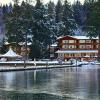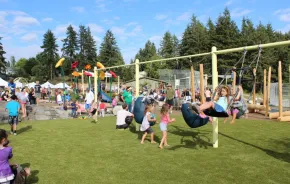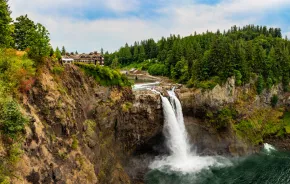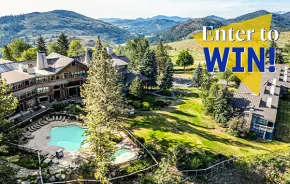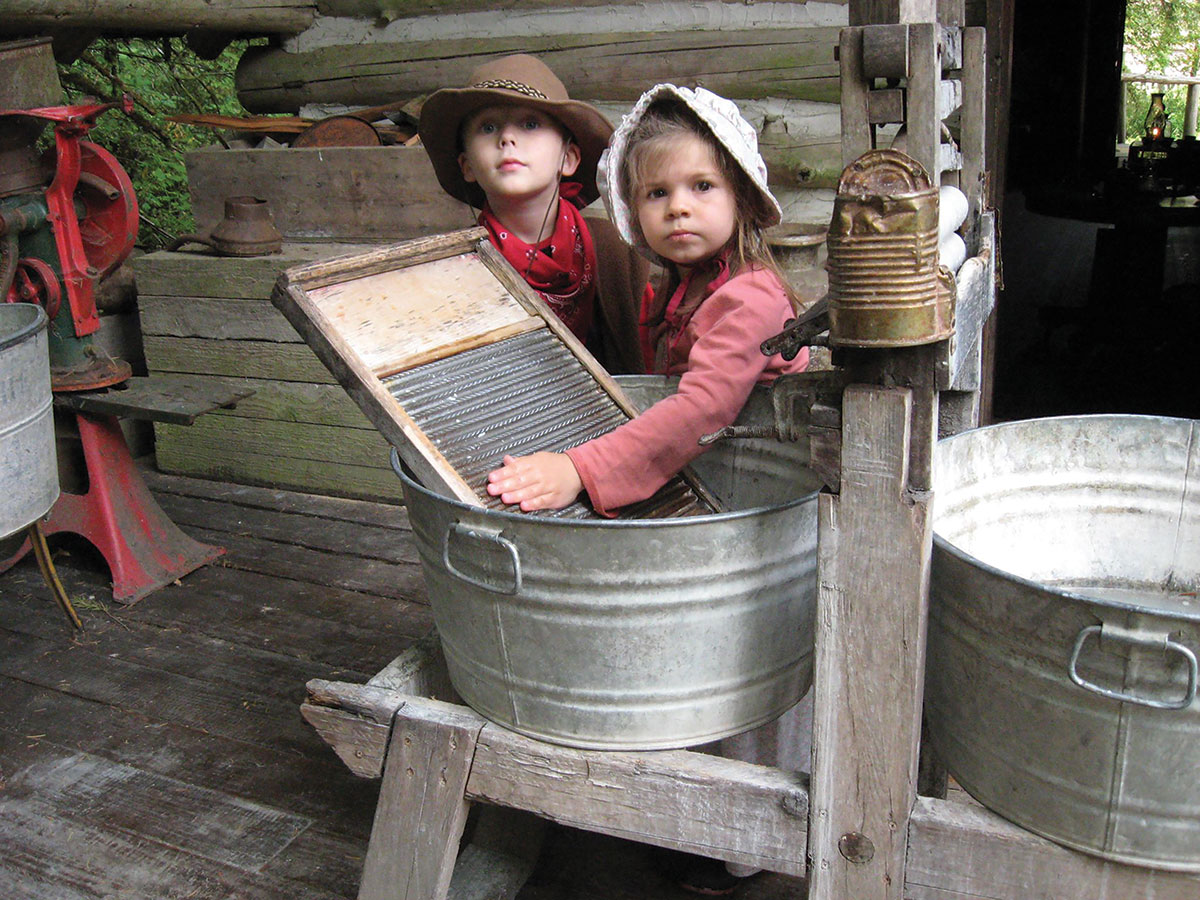
For kids, stories of life on the Western frontier conjure daydreams of wild, free adventures — covered wagons rolling through a herd of buffalo, finding dinner by bow and arrow, and churning real butter beside a campfire. The pioneers sold most of what they owned, said good-bye to family members forever and walked for months through the great unknown. Kids grew up quickly. In the frontier territories, even the youngest were given chores and real responsibility that aided the family’s survival. You might say pioneer kids were the original free-range children.
My own father grew up in a rustic farmhouse in rural Ohio. As soon as he could walk, he was gathering chicken eggs, planting seeds and shucking corn. His bathroom was an outhouse, and heat came only from the potbelly stove. It was the 1950s, but his stories sound more like he grew up a century earlier. I watch my 6-year old son listen intently to his grandpa’s homesteading tales and am inspired to bring such adventures to life for him, if only for a weekend.
These pioneer-era-inspired day trips around Puget Sound are fun, educational and offer curious kids the chance get hands-on lessons in living simply off the land the way natives and homesteaders once did. And with renewed interest in urban homesteading these days, you may even find a chance to put some of these skills to use on your own settled plot in the city.
Playing prospector
Cascadia was a land of plenty in the late 1800s, and drew settlers in search of fertile land to farm, furry animals to track, seas to sail, mineral deposits to mine and old-growth trees, as far as the eye could see, to harvest. Here are some fun ways to revisit those days.
Klondike Gold Rush National Historical Park
When news of gold in the Yukon spread across the continent in 1897, some 100,000 prospectors streamed into the region with hopes of striking it rich, and Seattle was the gateway for that migration. This free, interactive museum in Seattle’s Pioneer Square neighborhood tells that story through historical artifacts and two floors of interactive exhibits. Enjoy gold-panning demos daily in summer, 10 a.m. and 3 p.m.
Details: No entrance fee. Open daily in summer, 9 a.m.–5 p.m. 206-220-4240.
DIY gold panning in Snohomish County
The roots of mining and panning for glittering gold go all the way back to the 1870s, when settlers began mining along a creek north of Index. Gold in the sand and gravel of streambeds can still be recovered by panning. Simple gold-panning kits are inexpensive to purchase at sporting-goods stores and on Amazon. To protect fish habitat, follow guidelines and only pan for gold in permitted months (this varies by stream, but is usually in July–August). The Washington Department of Fish and Wildlife publishes the free booklet Gold and Fish to provide tips, recommended streams and guidelines for recreational gold panners. You must carry it with you. Download it here. (Note: Gold panning is primarily for fun and is unlikely to fill your kids’ piggy banks!)
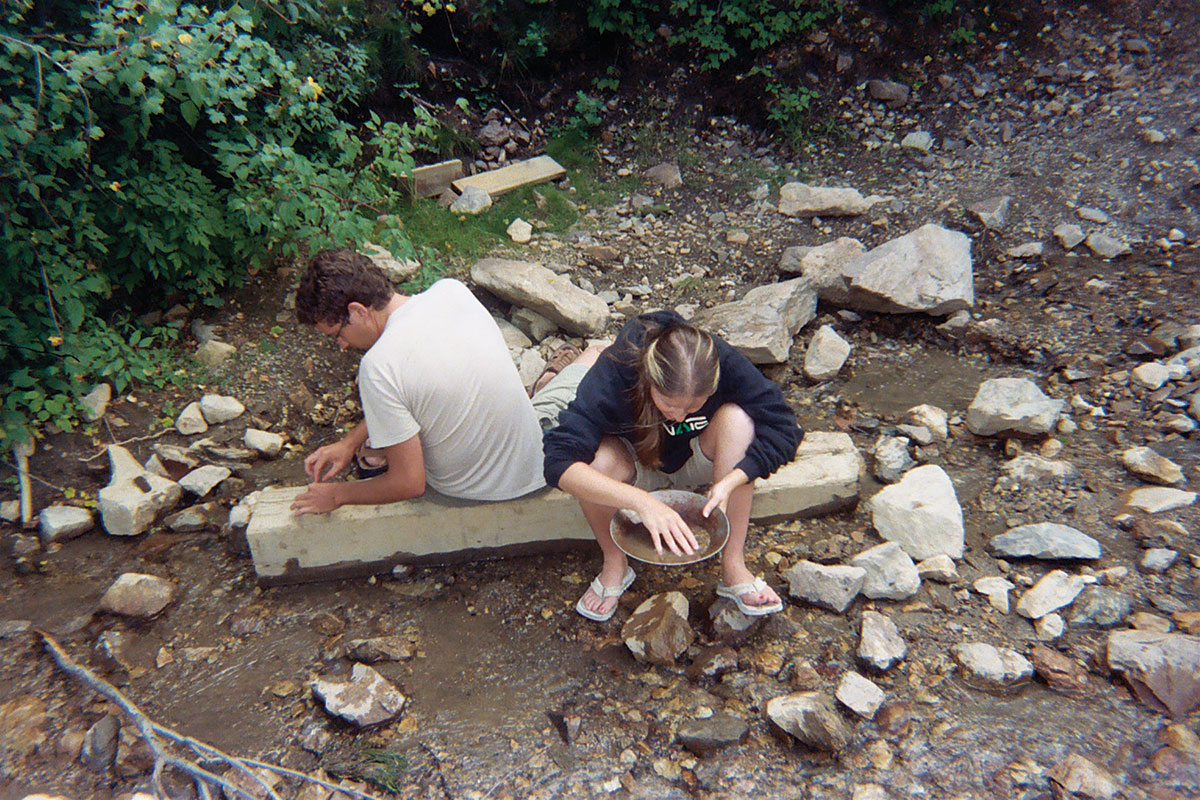
Pioneer arts and crafts
Before machines made quilts, baskets and candles, such everyday items were handcrafted at home and often considered works of art, if not labors of love. Traditional crafts are making a comeback, and today’s kids will cherish the knowledge of how to create useful, beautiful items with their hands, just like yesterday’s kids did on the frontier. Here are some places to get “back to basics” with crafts.
Job Carr Cabin House
Step into this log replica of Tacoma’s first nonnative residence and step back in time. Even the docents are in pioneer character! Your kids can join them by donning a calico dress and bonnet from the selection of kids’ pioneer garb. Hands-on activities include packing a small covered wagon with miniature gear and “cooking” a campfire meal with play pots and pans. Each month there is a “Craft Saturday” with a featured activity, such as Popsicle-stick cabins or small patchwork quilts (upcoming dates are July 25, Aug. 22, and Sept. 19).
Details: Open Wednesday–Saturday, noon-4 p.m. Admission is free. 253-627-5405.
Pioneer Farm Museum and Ohop Indian Village
Near Mount Rainier (and Northwest Trek), this unique spot allows families to see real homestead cabins from the 1880s and experience daily chores of settler families. Try churning cream into butter, grinding grains and carding wool. Climb into a covered wagon, and then visit the blacksmith shop to heat a horseshoe. A tour of the Indian village offers immersion in the everyday life of the Coast Salish peoples. Kids can try loom weaving, braiding leather, and archery with a bow and arrow. They can even help chip out a canoe.
Details: Tours of the museum and the village (separate tours) are $8–$9 per person and last 90 minutes, with a discount if you do both in the same day. Open daily in summer, 11 a.m.–4 p.m. 360-832-6300.
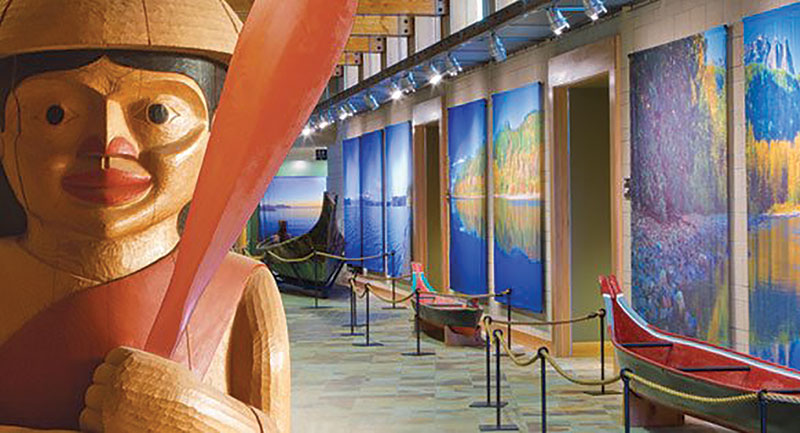
Hibulb Cultural Center and Natural History Preserve
The 4-year-old Native American museum in Tulalip offers a multisensory experience. Before you see a single exhibit, you’ll notice the beautiful craftsmanship of this museum and cedar longhouse. Wander interactive exhibits that tell the history of the Tulalip people through art such as story poles and intricate wood carvings. Learn how certain fishing, cooking and weaving techniques are unique to Tulalip culture. Come here on a Saturday afternoon at 2 p.m. for the youth crafting workshop and make a traditional dream catcher, small basket or beaded jewelry item.
Details: Open Tuesday–Friday, 10 a.m.–5 p.m.; Saturday–Sunday, noon–5 p.m. Admission for adults is $10; kids 5 and older $6; kids younger than 5 free. 360-716-2635.
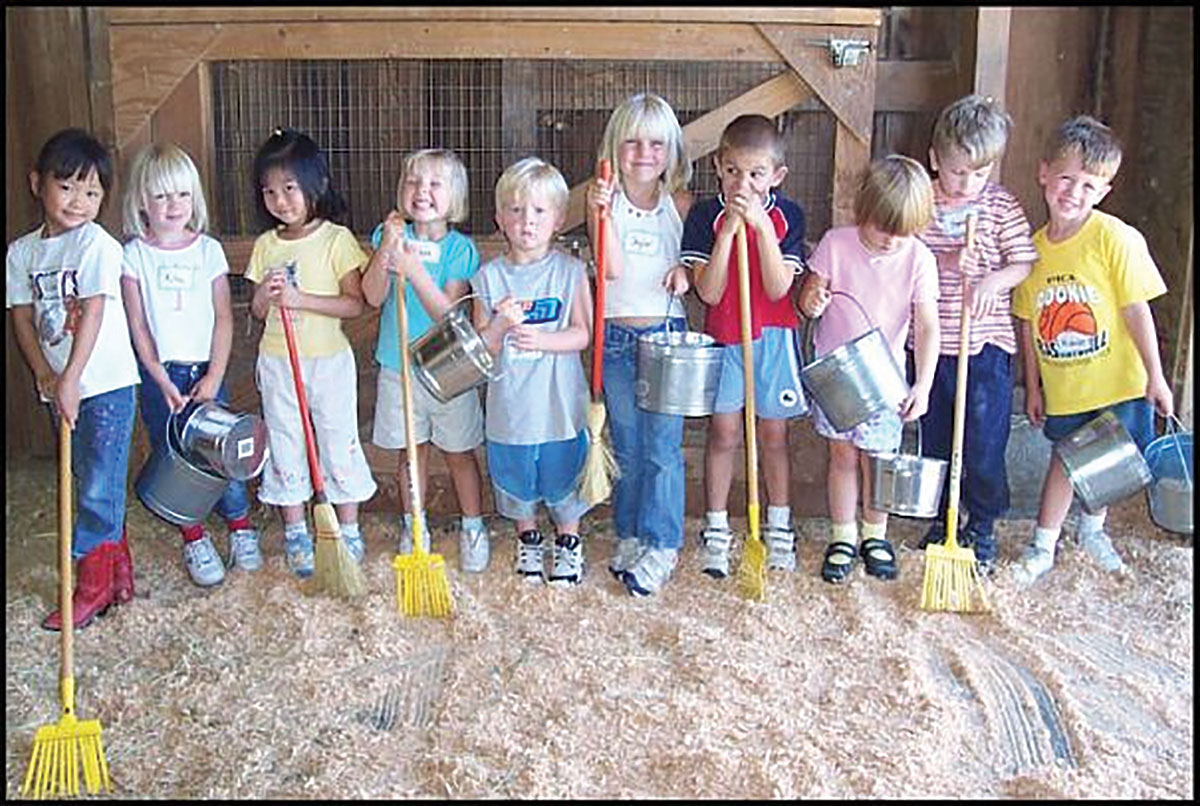
Homesteading on the range
In the pioneer era, a family’s daily needs came directly from their land claim: logs or sod to build their home; veggies, berries and wheat from their fields; and meat, eggs and milk from their animals for food; plus, wool for their sweaters. Your kids can get a taste of farm life at these spots.
Farm chores at Kelsey Creek Farm
This picturesque working farm in the middle of bustling Bellevue boasts a unique opportunity for children ages 2 and older to experience farm life in the most hands-on way possible — by doing. In summer months, take the “Kids on the Farm” tour and learn all about the care and feeding of the goats, sheep, ponies and rabbits, then move inside for a lesson on wool carding (children create fuzzy sheep to take home).
Details: Call to schedule your tour, which is $85 and covers as many as 15 participants. Four more tailored kids’ classes meet in fall, winter and spring months, and feature opportunities for kids to participate in barn chores, animal feeding, baking and gardening. 425-452-7688.
Backyard chickens with Seattle Farm School
Got a yearning for backyard chickens, but don’t know where to start? This two-hour workshop at various locations in West Seattle covers all the basics and is held right beside a real backyard coop in West Seattle. Even better, this new school designs its classes and workshops (from canning jam to growing veggies) for families so that kids can learn great homesteading skills alongside their parents, and each parent admission gets one child in for free!
Details: The next city-chickens class is Aug. 30, and the adult fee is $35. 206-218-4948,
Food field trips with The Pantry
The inventive food-prep classes at this Ballard cooking school fill quickly, but hands-on field trips can be the last to fill, and are a great choice for parents and older children. Head to Stokesberry Sustainable Farm in Olympia (Sunday, July 19; $70 per person) to bond with happy laying hens and help collect the day’s eggs (which you can take home) while learning how they’re produced sustainably. You’ll also meet organically raised pigs and cattle.
Details: Call 206-436-1064 or check thepantryseattle.com to book a class
Cheese-making tour at Mystery Bay Farm
These award-winning artisan cheese makers on Marrowstone Island, near Port Townsend, offer hands-on cheese-making and milking tours for all ages at their small-scale, sustainable operation. You’ll see how sustainable cheese is crafted, start to finish, from rotational grazing and humane animal husbandry to the actual artisan cheese making (and tasting!).
Details: The tours start at $10 per person with kids 10 and younger free. 360-385-3309.
 The frontier bookshelf
The frontier bookshelf
These reads, both fiction and nonfiction, will have kids dreaming of life on the range and inspire them to try their hands at small-scale homesteading and forgotten crafts.
West to Oregon with Ollie Ox! by Melanie Richardson Dundy (ages 6–10). This cute illustrated e-book (available for Kindle and Nook) is an Oregon Trail story with a delightful twist — the narrator is an ox!
Cheyenne Again by Eve Bunting (ages 5–8). Young Bull is a Cheyenne boy in the 1880s who finds himself uprooted as his tribal leaders adopt the “white man’s” ways of living. He struggles to hold on to his heritage in this compelling tale.
Dandelions by Eve Bunting (ages 5–8). The moving story and beautiful illustrations of young Zoe and her family’s new life of ups and downs in a prairie sod house make it one of the best pioneer-era narratives for young children.
Little House on the Prairie box set, Laura Ingalls Wilder (ages 8 and older). This classic collection of nine children’s historical fiction books chronicle hardships such as relentless snowstorms and devastating drought, as well as stories of family bonding by flickering lantern light and folk songs on the fiddle.
Bound for Oregon by Jean Van Leeuwen (ages 8 and older). Whether your child has already plowed through the Little House books or simply prefers a narrative with ties to the Pacific Northwest, she’ll love this tale of 10-year-old Mary Ellen Todd and her family’s tumultuous journey westward in 1852.
The Forgotten Arts & Crafts by John Seymour (all ages). Before modern industrial times, barrels were handcrafted by coopers and a specialized blacksmith called a farrier forged the perfect horseshoe. Engaging words and illustrations bring to life these bygone skills.







